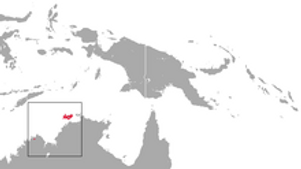Carpentarian Dunnart
They are also known as the Butler's dunnart with a puffy brown or mouse grey colour above and the underside of white, they are similar to its close relative the Kakadu dunnart. They measure from their head to their anus which they have an average of 75-88mm with a tail length of 72-90mm long for a total length of 147-178mm. Weight varies from 10-20g depending on a variety of factors which include sex, food abundance, habitat etc.

Habitat
Found in the Northern Kimberley's near Kalumburu in Western Australia and Bathurst and Melville Island in the Northern Territory. Habitat consists of eucalyptus and melaleuca forest with sandy soils up to and including 20 km from the coast. Also present on the island of New Guinea. In New Guinea found in grasslands and savannah in west of the island.

Diet
No information, but most likely insects and small vertebrates like other dunnart species
Breeding
Nothing is known about the reproductive biology of this species except that a female collected from the Kimberley was carrying seven pouch young. May breed in the dry season but needs more study.
Population
According to IUCN Red List they are classed as vulnerable(V), there current population trend is decreasing and they were last assessed on 15th June 2015. They are a rare species. The overall population is likely to be less than 2,500 mature individuals. Only about 30 individuals have been located on the Tiwi Islands despite intensive survey work since 1991. The paucity of records might be due in part to conventional trapping techniques not being suited to this species (e.g., Elliott traps and pitfall traps). In any case, it is not a common species and its distribution within the islands is sparse. The population status in the Kimberley is unknown; it has not been located here since the 1960s.
Threats
This species is rarely encountered, so there is little certainty about the threats to it. Its rarity, however, is probably due to a variety of threatening processes. Exotic predators (cats and possibly dogs), changes to the fire regime, and the destruction and degradation of habitat are all probable major threats. Proposals to expand exotic tree plantations on Melville Island are a major concern, because the species is not found within existing plantations